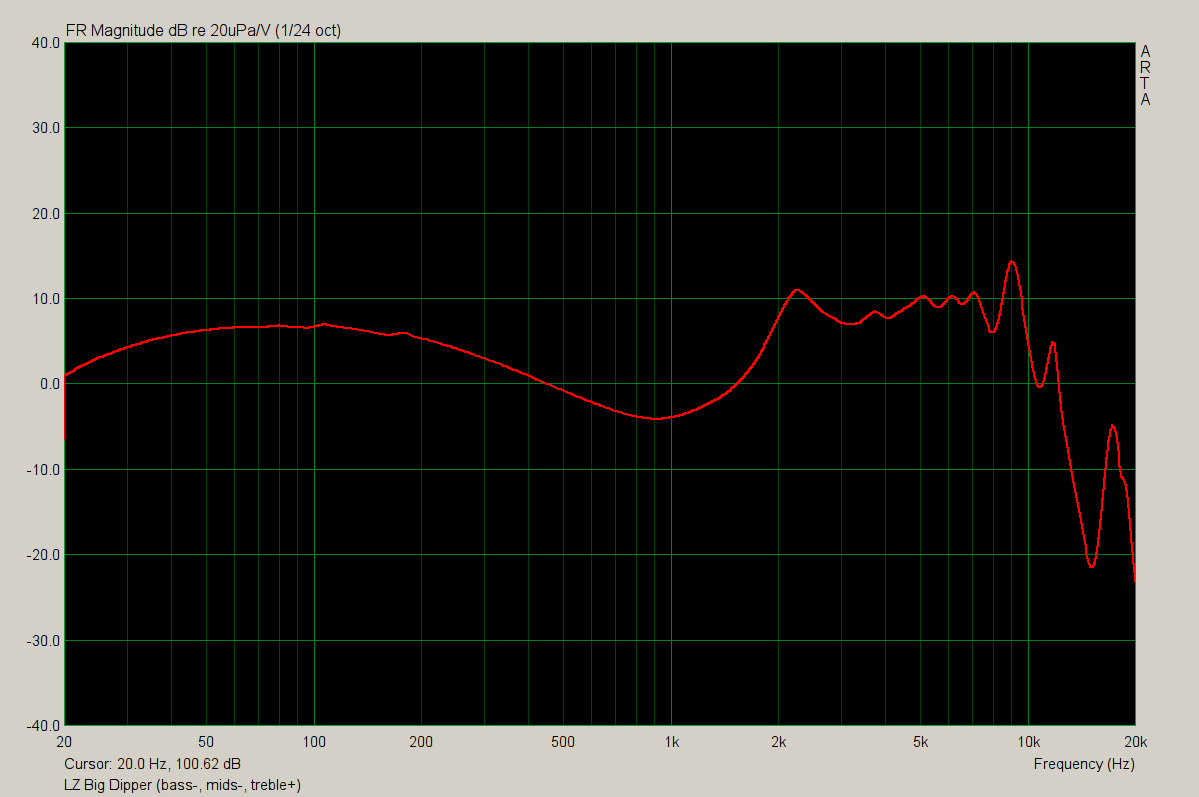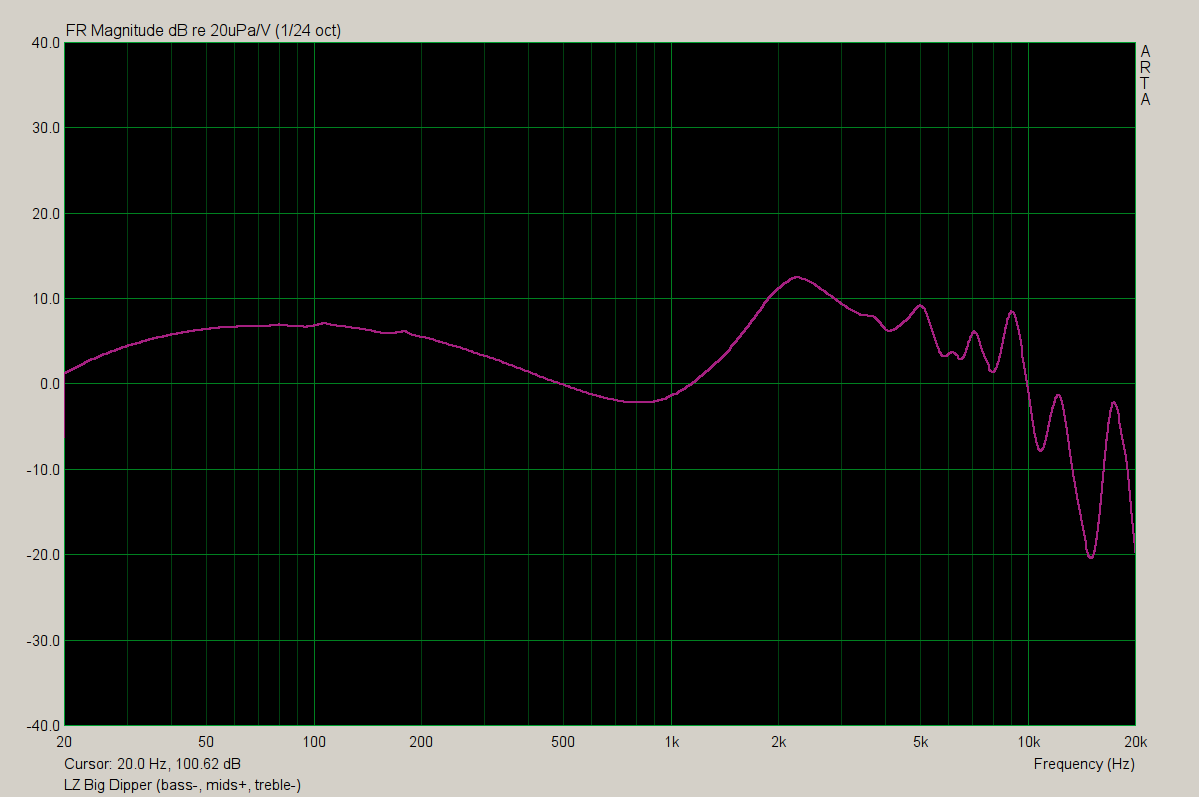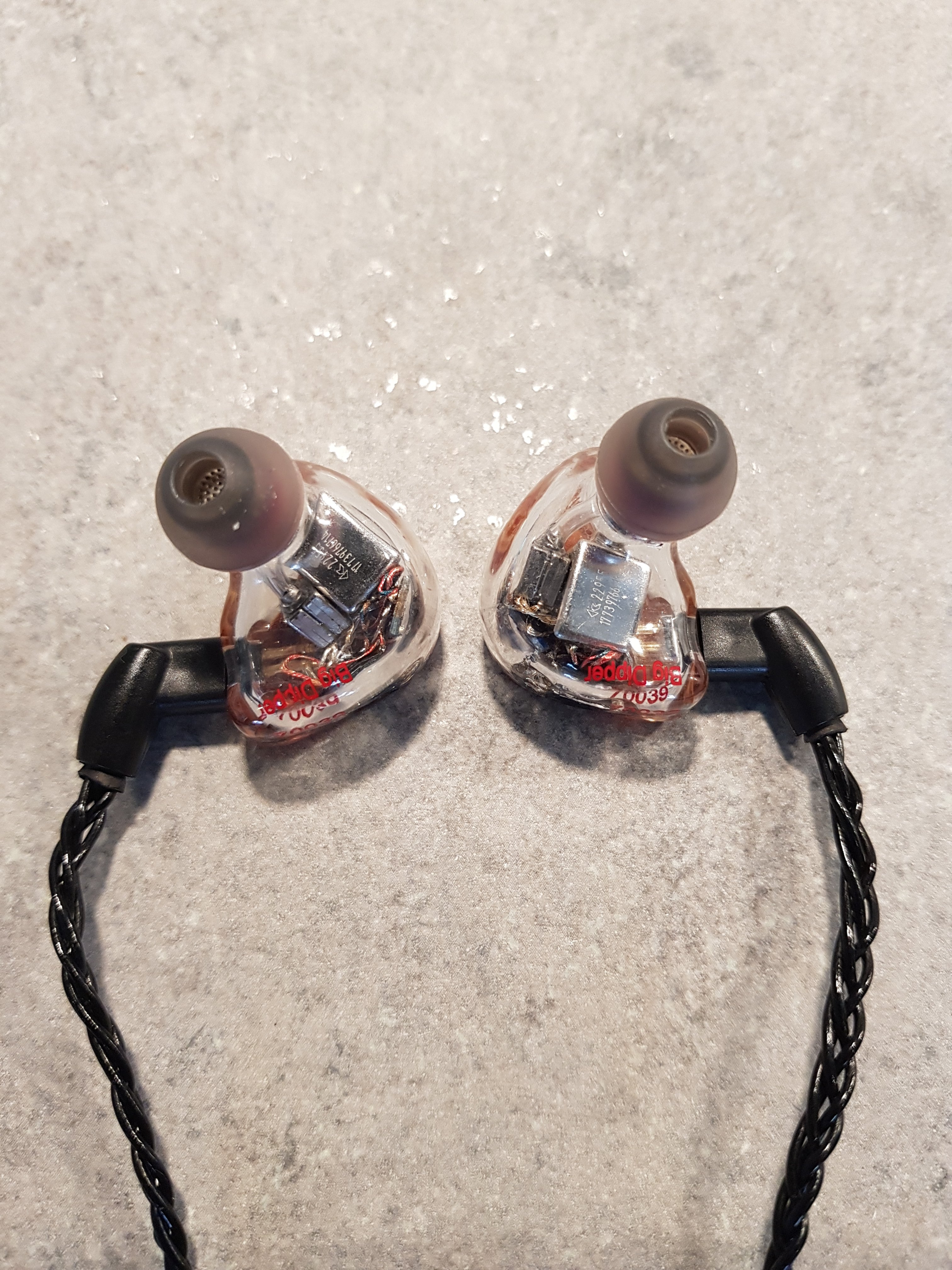Ok, so I've spent a couple of days with the BD now and found my preferences with the switches and tips for them so here's some initial impressions and pictures:
First thing first: the switches.
Bass: Putting the bass switch to ON gives great subbass but unfortunately also too much midbass for my liking. A side effect of this is that soundstage width is seriously compromised and goes from a very wide and airy presentation to a intimate, more focused presentation. I definitely prefer the first alternative so this in itself is kind of a deal breaker for me when it comes to using the bass switch. I do also feel that the midrange becomes to distant when turning the bass on.
Midrange: Being a midrange lover I definitely prefer the presentation with the midrange switch set to ON. The midrange quality of the BD is crazy good with exceptional detail and clarity and I most definitely like to get it in focus.
Treble: Putting the treble switch to ON gives a really airy top end but to my ears it's just too much if a good thing and makes the sound less coherent, maybe even unnatural.
So in sum so far the only switch I'm using is the the midrange one.
To start with I found the BD to be really bass light and this sounding an I was honestly quite puzzled and a bit disappointed. Eventually I realized that I wasn't getting a perfect seal although I was sure that I did. Now, with some double flange tips, I get great bass impact and a full midrange with very little (if any) bass bleeding into the midrange. As a matter of fact I've never heard such a a full and rich midrange on any IEM's without feeling that they've got too much upper bass intervene with the mids. I'm also totally amazed that a pair of IEM's can offer such high resolution and clarity without ever sound fatiguing. I've also never heard so many perfect "s" in any IEM's before. Yes, if the recoding is sibilant the BD will show it but less so than many other IEM's I've heard. For me personally I tend to not enjoy IEM's or headphones that doesn't show sibilance if it's there in the recording as it is a sign that they're not detailed enough or roll off too early for me to enjoy them.
I'm comparison to the BD the Super Audio 6 (one of my all time favorite IEM's) sounds really mushy and the bass on the Magosi K3 HD (which has one of my favorite bass presentations) sound really boomy.
Lately I've pretty much been listening to full sized headphones as I've acquired both the HE560 and HD800S the last couple of months and the BD is the only IEM's that I can move directly to from either of these two excellent headphones without feeling initially (until my brain adapt) underwhelmed.
Unfortunately I have only heard a couple of other IEM's in this price range but the BD is undoubtedly the best IEM's I've ever heard. They're just so totally natural sounding, much more so than any other IEM's I've heard.
Isolation is also top notch and both build quality and comfort seems great so far.
























































